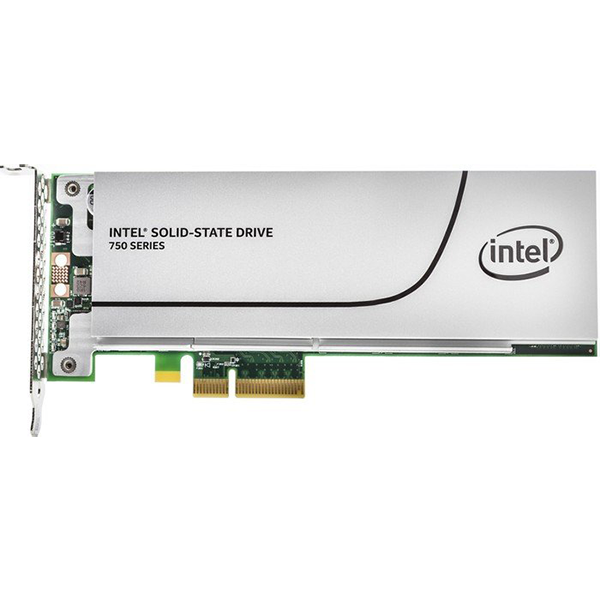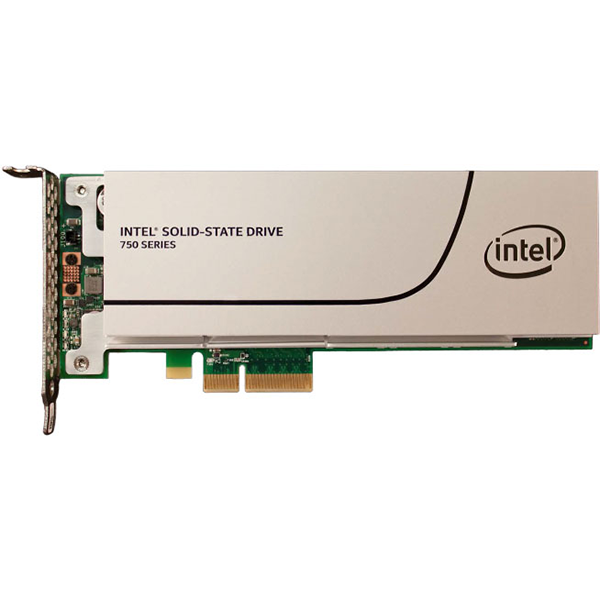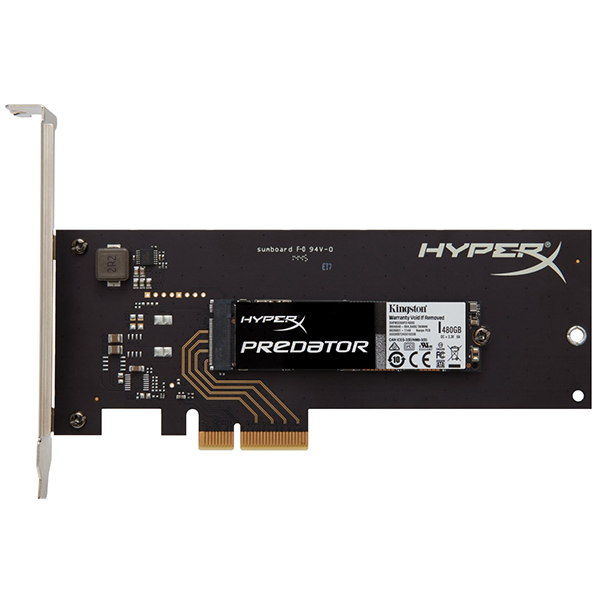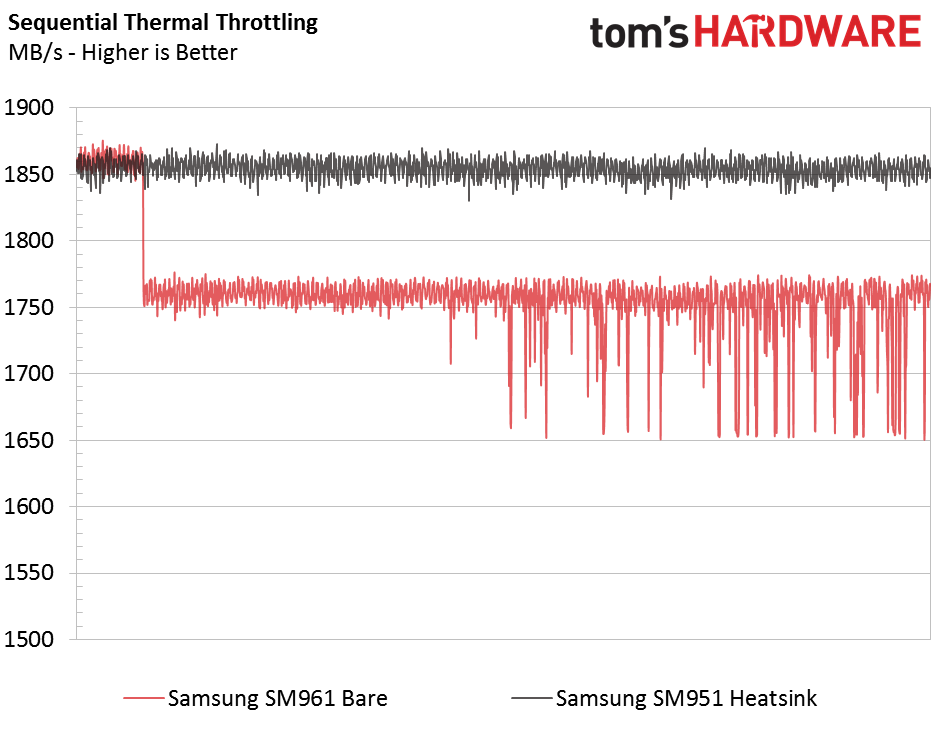Samsung SM961 SSD Review
The SM961 is the SSD that everyone is talking about because it provides up to 3,200 MB/s of sequential performance. No more rumors, today we test the new Samsung SM961 1TB NVMe SSD from the SSI group. Is this your next SSD?
Why you can trust Tom's Hardware
Four-Corner Performance Testing
Comparison Products
SSD manufacturers quickly adopted NVMe for the enterprise space, but the industry has been slow to adopt the technology for consumer use. There are only four retail NVMe products currently shipping: the Samsung 950 Pro, Intel SSD 750, OCZ RD400 and the Zotac SONIX. The SONIX SSD is not in our comparison charts today (the Phison E7 NVMe controller will receive a new firmware update in the coming weeks that increases performance).
We included the largest and smallest capacity Intel SSD 750 NVMe Add-In Card (AIC) SSDs in the test results. You can read about the mid-range 800GB drive here.
Even as an OEM product, the Samsung SM961 is a direct competitor to the Samsung 950 Pro because both SSDs feature the M.2 form factor and slot into desktops and high-performance notebooks. We included both existing 950 Pro capacity sizes. Samsung relayed to media that a larger 1TB 950 Pro would emerge in early 2016, but it has yet to launch and the SM960 throws its eventual arrival into doubt (at least as a 950 Pro). Some have speculated that Samsung will release a new 960 Pro with the new Polaris SSD controller later in 2016.
We also included the 480GB Kingston Predator in the tests. The Predator employs a Marvell PCIe 2.0 x4 flash controller and serves as a representative of the previous generation M.2 SSDs that utilize the AHCI protocol.
To read about our storage tests in-depth, please check out How We Test HDDs And SSDs. Four-corner testing is covered on page six of our How We Test guide.
Sequential Read Performance
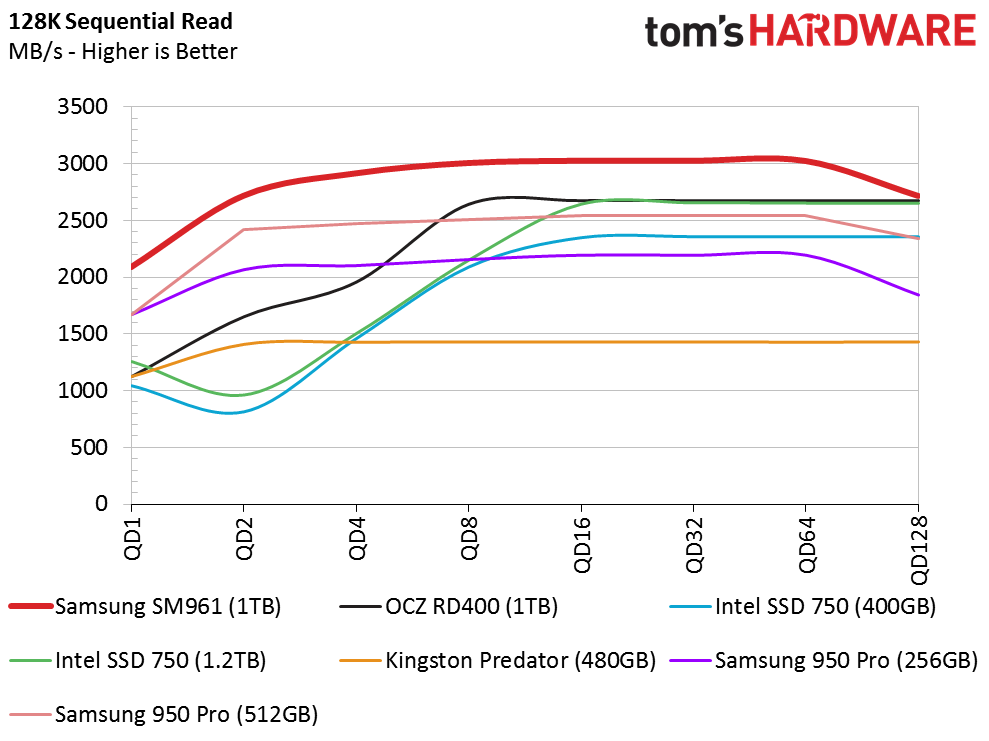

The Samsung SM961 1TB rocks the competition right out of the gate. We measured the queue depth 1 sequential performance at 2,100 MB/s, and at one point, we recorded a QD1 transfer at just under 2,500 MB/s. To put this into perspective, that is the same performance you would get with a dedicated enterprise RAID controller and five to six high-quality SATA 6Gbps SSDs running in RAID 0. Sequential QD1 throughput at 2,500 MB/s is one of the wild-wild west numbers, and gitty-up is all I have to say.
Sequential Write Performance
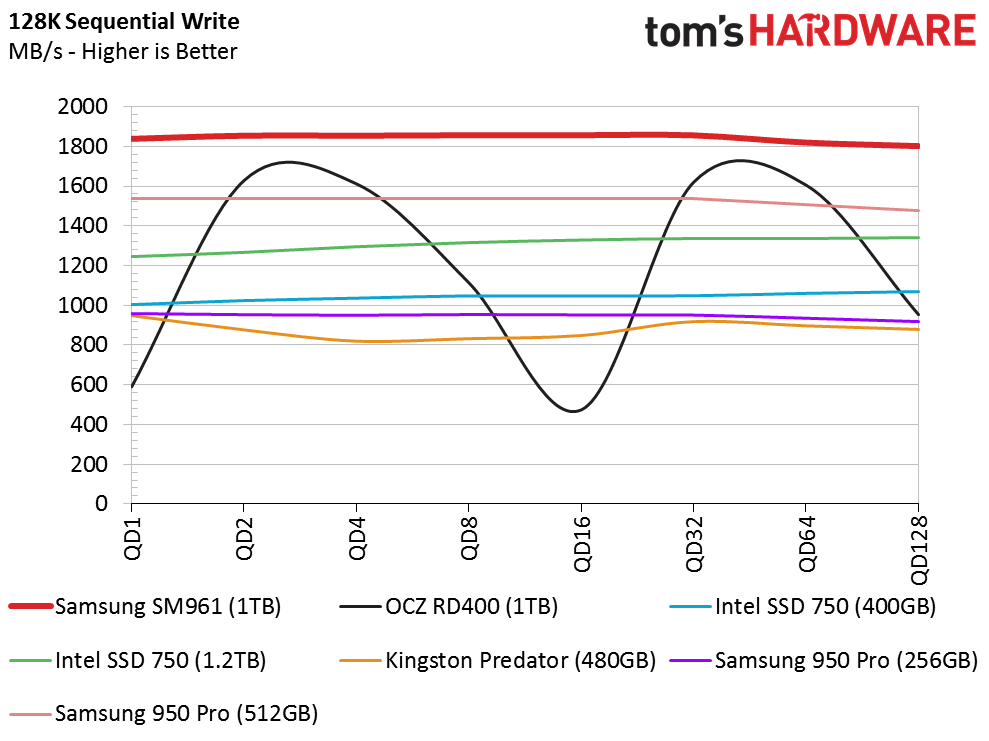
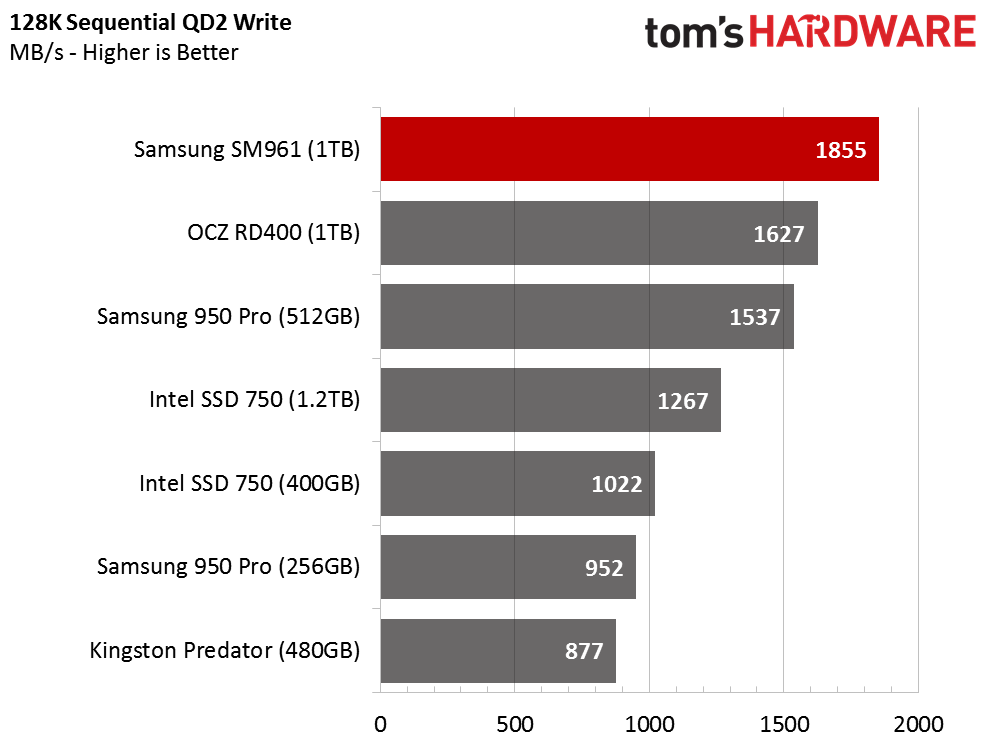
The SM961's sequential writes take off like a rocket ship. The SM961 delivers 300 MB/s more than the 950 Pro 512GB at QD2, and it doesn't let up. NVMe SSDs don't scale as well as we increase the queue depth during the test.
Get Tom's Hardware's best news and in-depth reviews, straight to your inbox.
The OCZ RD400's test results indicate inconsistent performance, but the values are not a result of the queue depth load. The RD400 is thermal throttling from the heavy and prolonged workloads. We tested the drive for throttle issues under more realistic conditions and did not find an issue.
Thermal Throttling

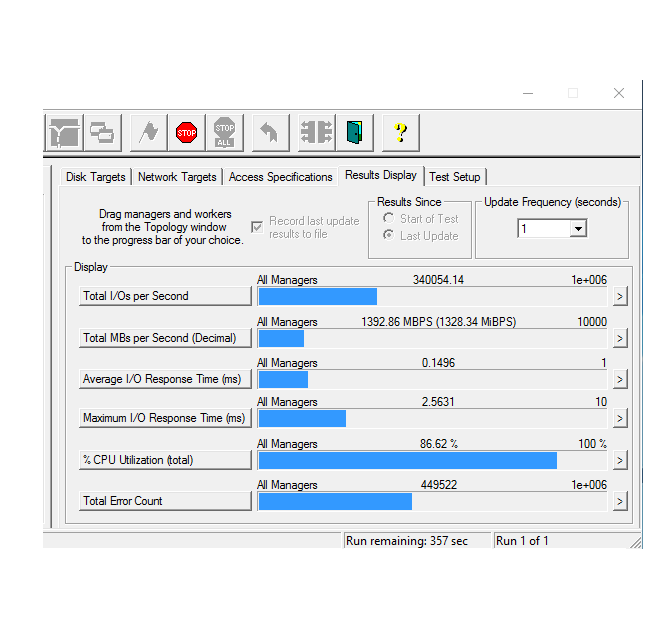
Most SSDs, including many consumer 2.5-inch SATA products, will throttle during prolonged write workloads. During normal desktop use, the random data comes in short bursts that do not trigger throttling, or the effect goes unnoticed. Some of the early PCIe SSDs were prone to throttle issues while transferring large sequential files in rapid succession. Many of the user complaints about thermal throttling are triggered by running intense benchmarks rather than real world use.
We attempted to force throttle conditions to determine the temperature threshold where the SM961 would begin to restrict performance. This test also allows us to determine just how much the SSD would restrict performance to reduce temperatures. The SM961 never surpassed 50C in Crystal Disk Info, and we could only reach that temperature under a very heavy workload of 340,000 IOPS. It took several minutes for the temperature to increase from an idle of 22C up to 50C. The SM961 plateaued at 50C and its temperature did not climb any higher.
We tested the SM961 both with and without an Angelbird Wing PX1 heatsink during a similar sequential data test. We zoomed the chart axis in on the results to provide more granularity. The test consisted of 128KB sequential writes at a queue depth of 1 over a 30 minute span, and the Samsung SM961 1TB began to throttle performance after several minutes of writing data. The performance continued to degrade, and after roughly 15 minutes, it become erratic as the controller began dynamically throttling the Polaris controller to regulate its temperature.
Random Read Performance

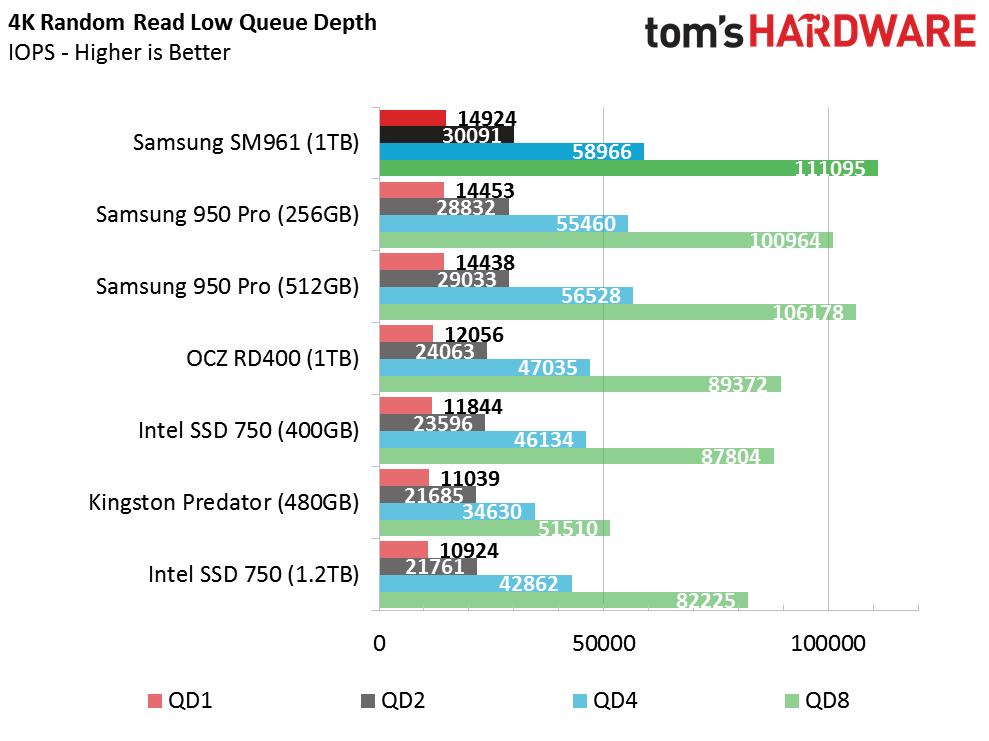
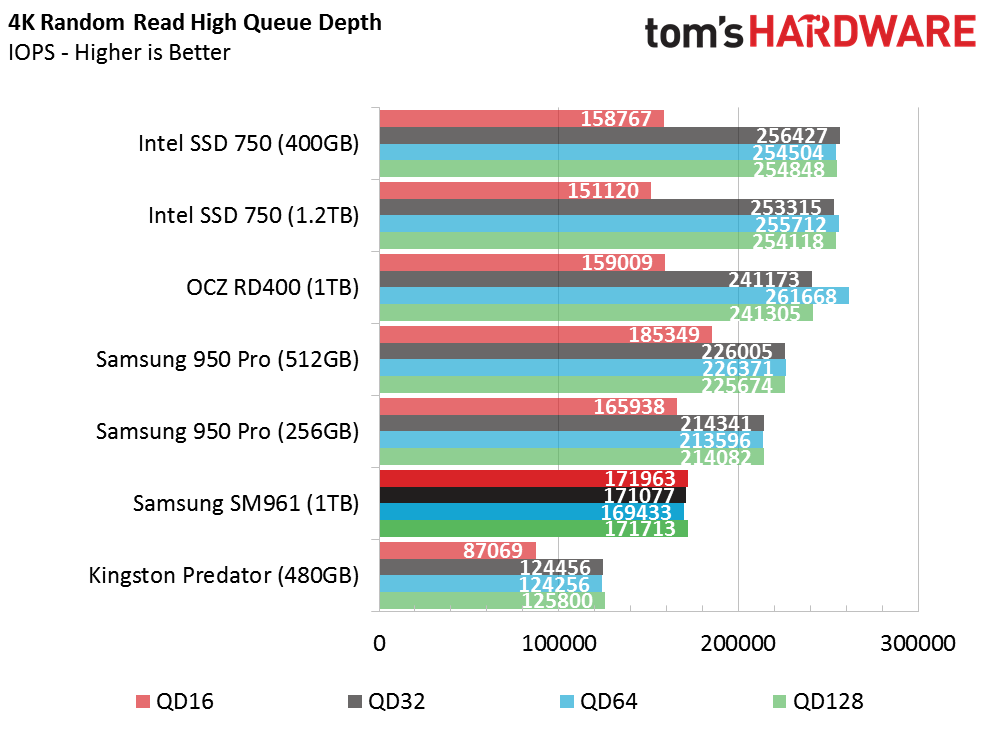
The Samsung SM961 delivers the highest queue depth 1 random read performance we've tested on a consumer SSD. The SM961 is only slightly faster than the 950 Pro 512GB at low queue depths. The SM961 plateaus while many of the other SSDs continue to scale at high queue depths. This is outside of the realm of normal consumer workloads, but it indicates the limits of the Polaris controller with standard queue depth scaling. The SM961 can achieve higher results by taking advantage of the advanced NVMe command queues and deeper queue depths, which are often exposed by multiple workers (threads) generating I/O commands.
Random Write Performance

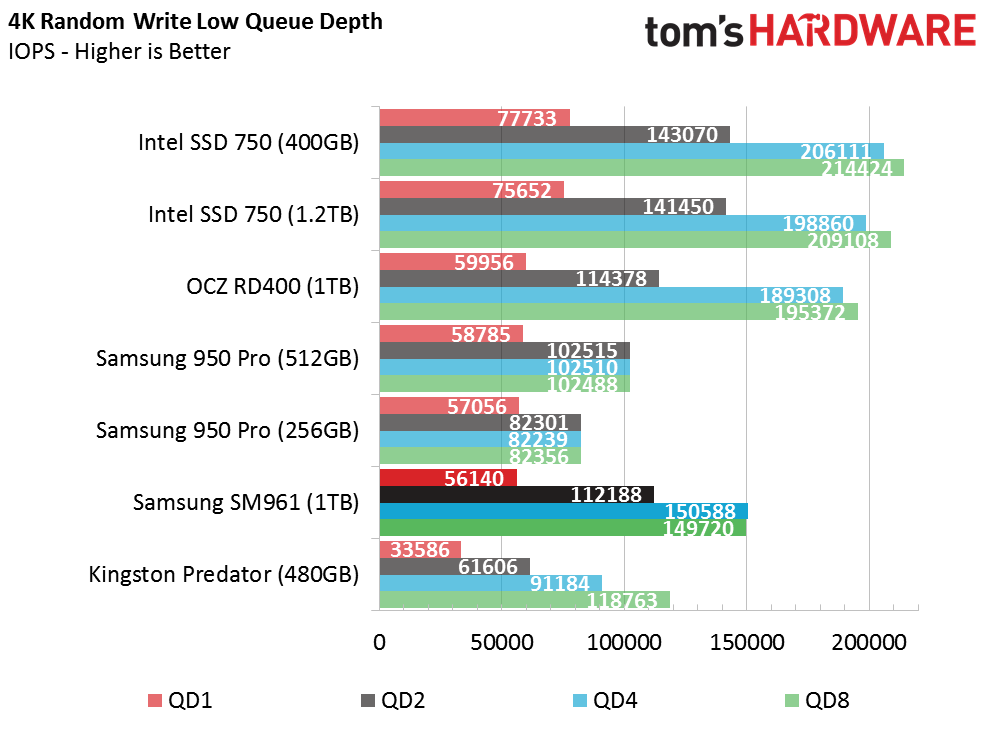

The SM961 is slightly slower than the 950 Pro SSDs at a queue depth of 1, but it outperforms both 950's as the queue depth increases. However, the Intel 750, and even the OCZ RD400, deliver higher random write performance.
Current page: Four-Corner Performance Testing
Prev Page Specifications, Pricing, Warranty And Accessories Next Page Mixed Workloads And Steady State
Chris Ramseyer was a senior contributing editor for Tom's Hardware. He tested and reviewed consumer storage.
-
Sakkura Polaris controller? Can we maybe not all use the same codenames, please?Reply
Nice SSD though. Wonder when we get a retail version. -
TechyInAZ Wow, that's pretty sweet for how cheap it's coming to market.Reply
Can't wait to see how the 860 Pro and 860 EVOs do. That will be a blast. -
Paul Alcorn Reply18186821 said:Polaris controller? Can we maybe not all use the same codenames, please?
It will be interesting to see who sues first. -
My 3 month old 950 Pro is already obsolete :P OK not really. It is great to see these drives getting better and cheaper though. The 960 Pro should be a beast.Reply
-
Richard_141 My Lenovo T460S bought last month with a generically described "1TB NVMe" came with an OEM PM961 in it. Very nice and fast although having to use software bitlocker so far as either it's not eDrive/OPAL or can't enable it as Samsung Magician only works on retail drives...Reply -
CRamseyer Ah, thanks for the update. The PM961 is certainly on my radar. It's the TLC flash brother to the SM961. I would love to get my hands on that drive for three days and 9TB of data writes.Reply -
heliomphalodon "Intel RST issues in RAID 0 on Z170 (Intel's Fault)"Reply
This is a deal-breaker for me - and why is it Intel's fault? SM951 works fine with RST on Z170, while SM961 does not - and it's not Samsung's fault? -
Ninevah Unless I'm mistaken, there are articles on the web around how to setup a bootable RAID with multiple Samsung 950 Pros on certain motherboards. The key is that it only works if the mobo has Intel RST built into the UEFI. Here's the best article I've found on it: http://www.thessdreview.com/daily-news/latest-buzz/understanding-m2-3xraid0-nvme-boot-performance/Reply
Now, I've only seen Z170 boards with more than 1 M.2 slot, so it's arguably not worthwhile, as that site's tests showed. The limited PCIe bandwidth available on the Z170 probably negates any performance gains from such a setup. X99, however, has tons more PCIe lanes available. I don't get why we haven't seen X99 boards with multiple M.2 slots thus far. That seems like a perfect use of all those lanes--especially given NVIDIA's recent dropping of support for 3-way and 4-way SLI. What else are you going to use all those lanes for, now?
